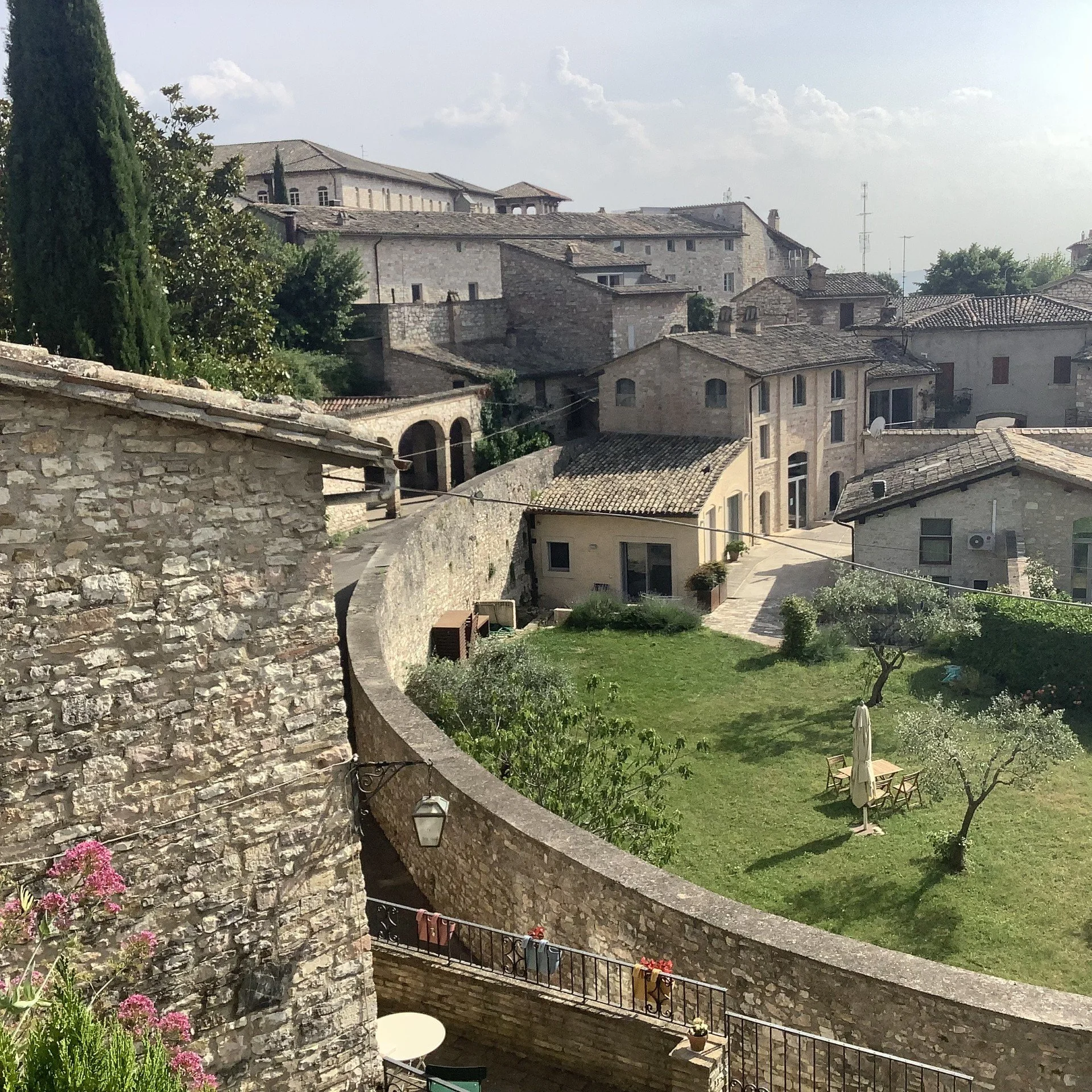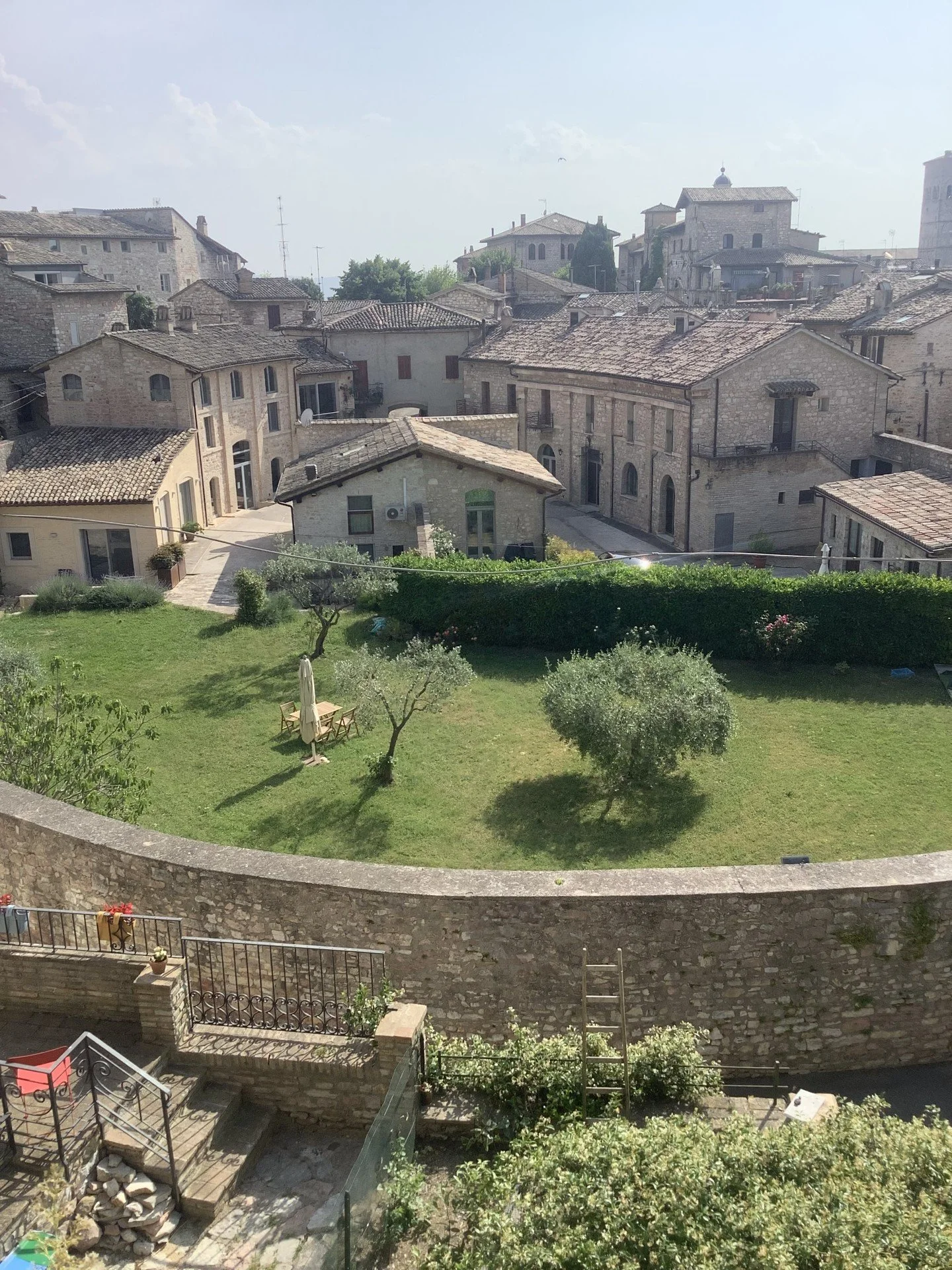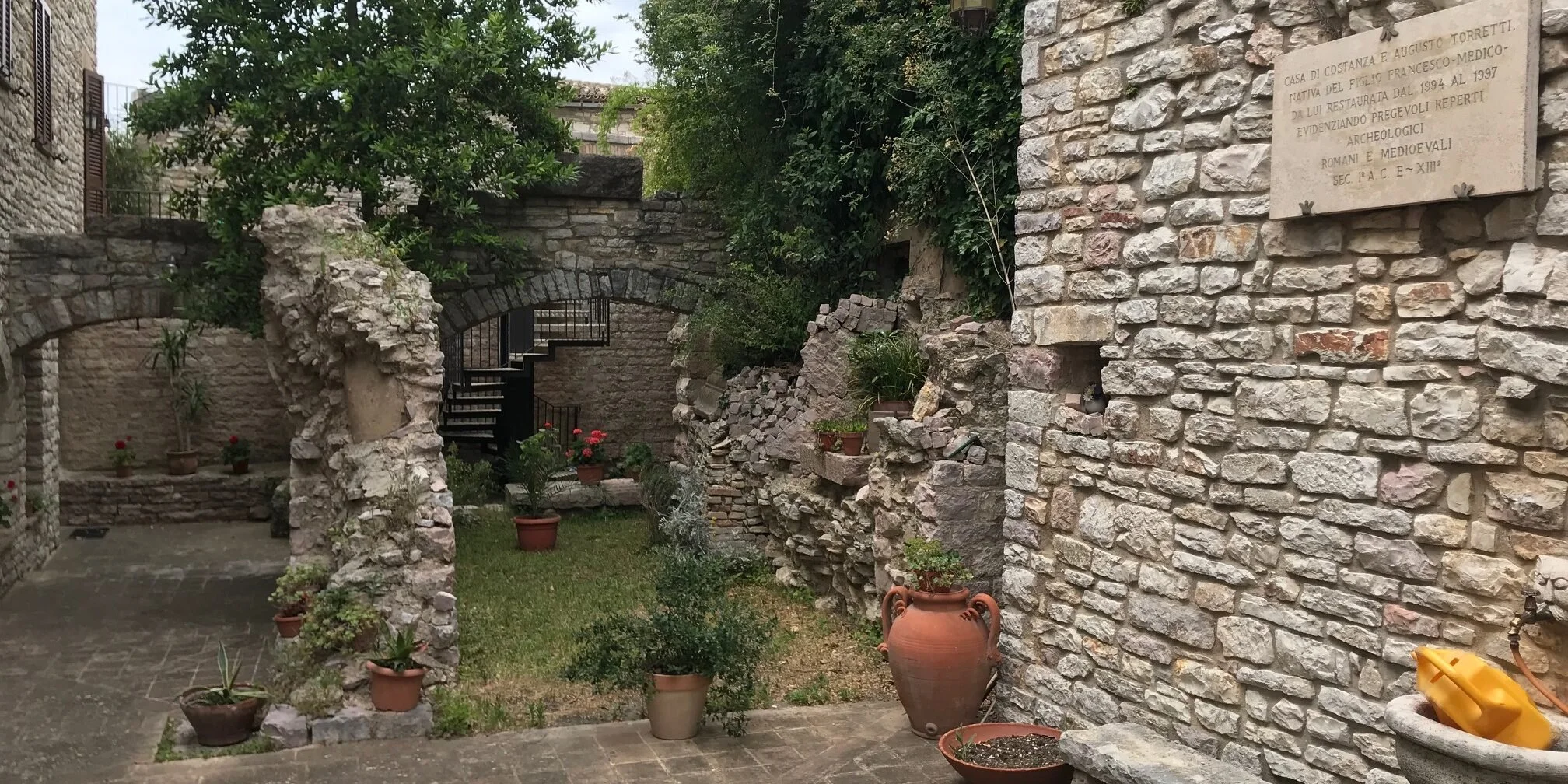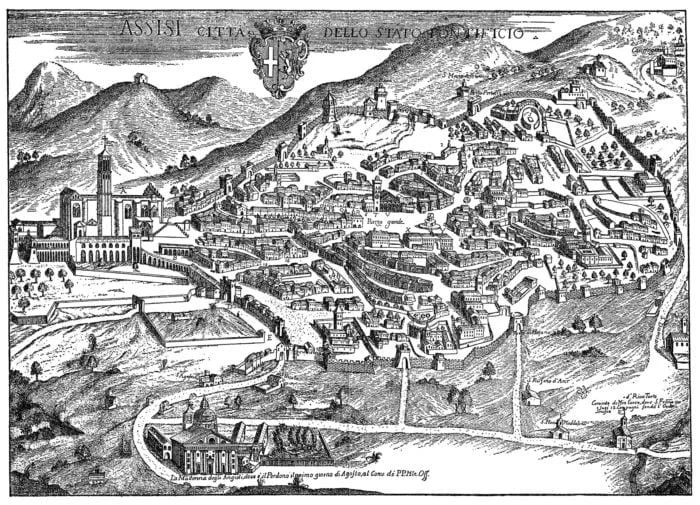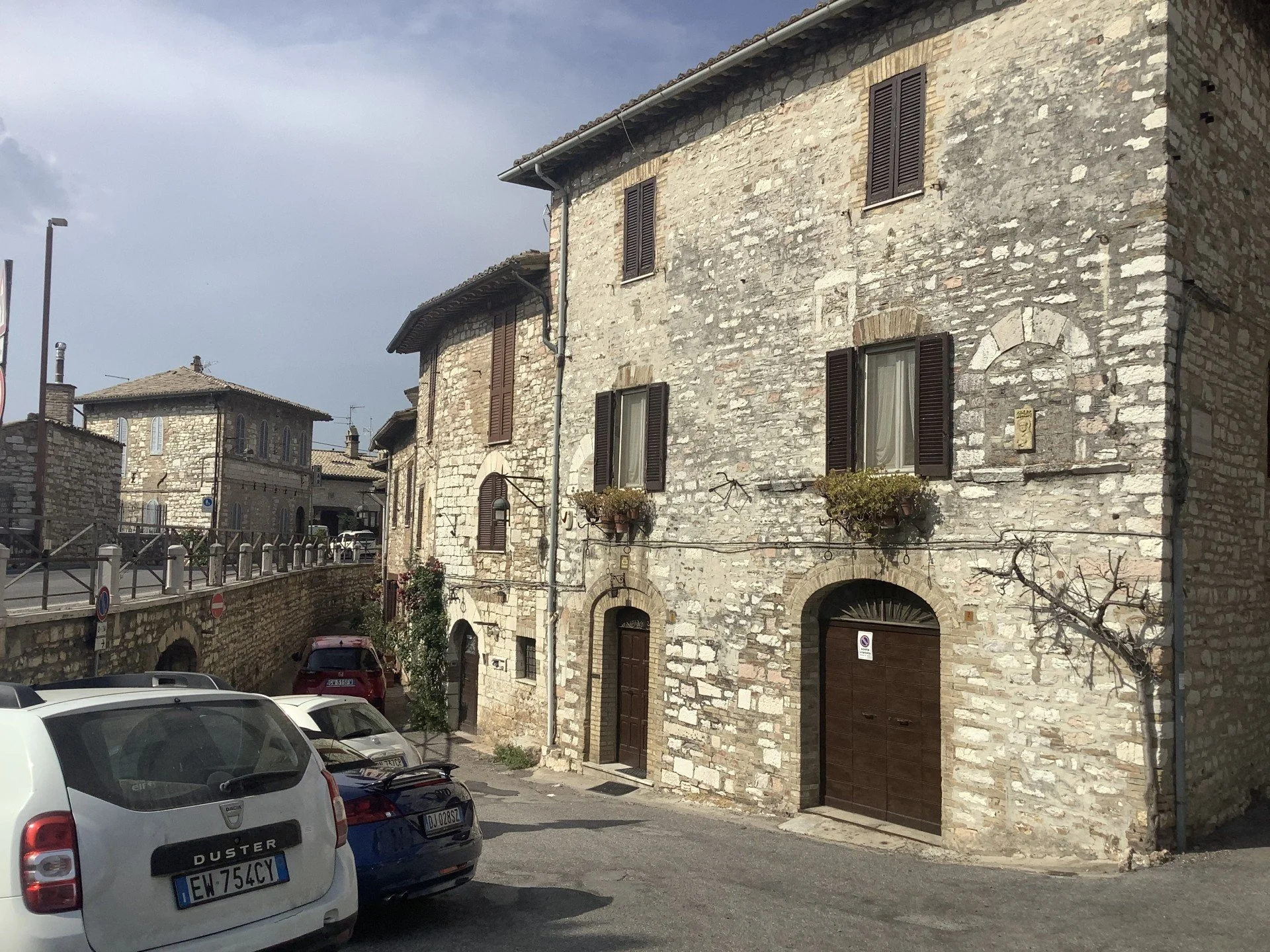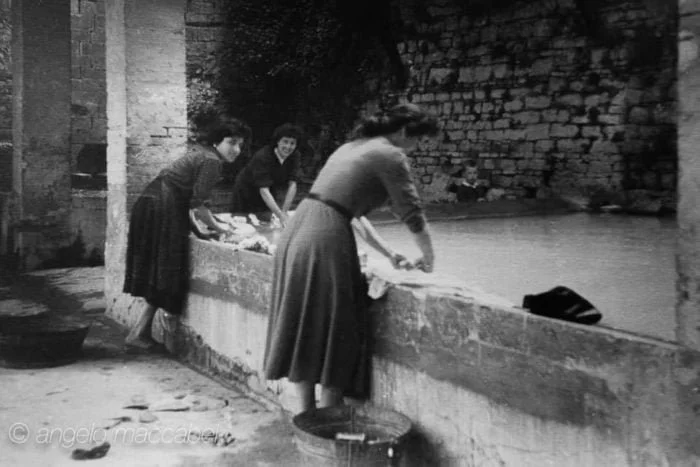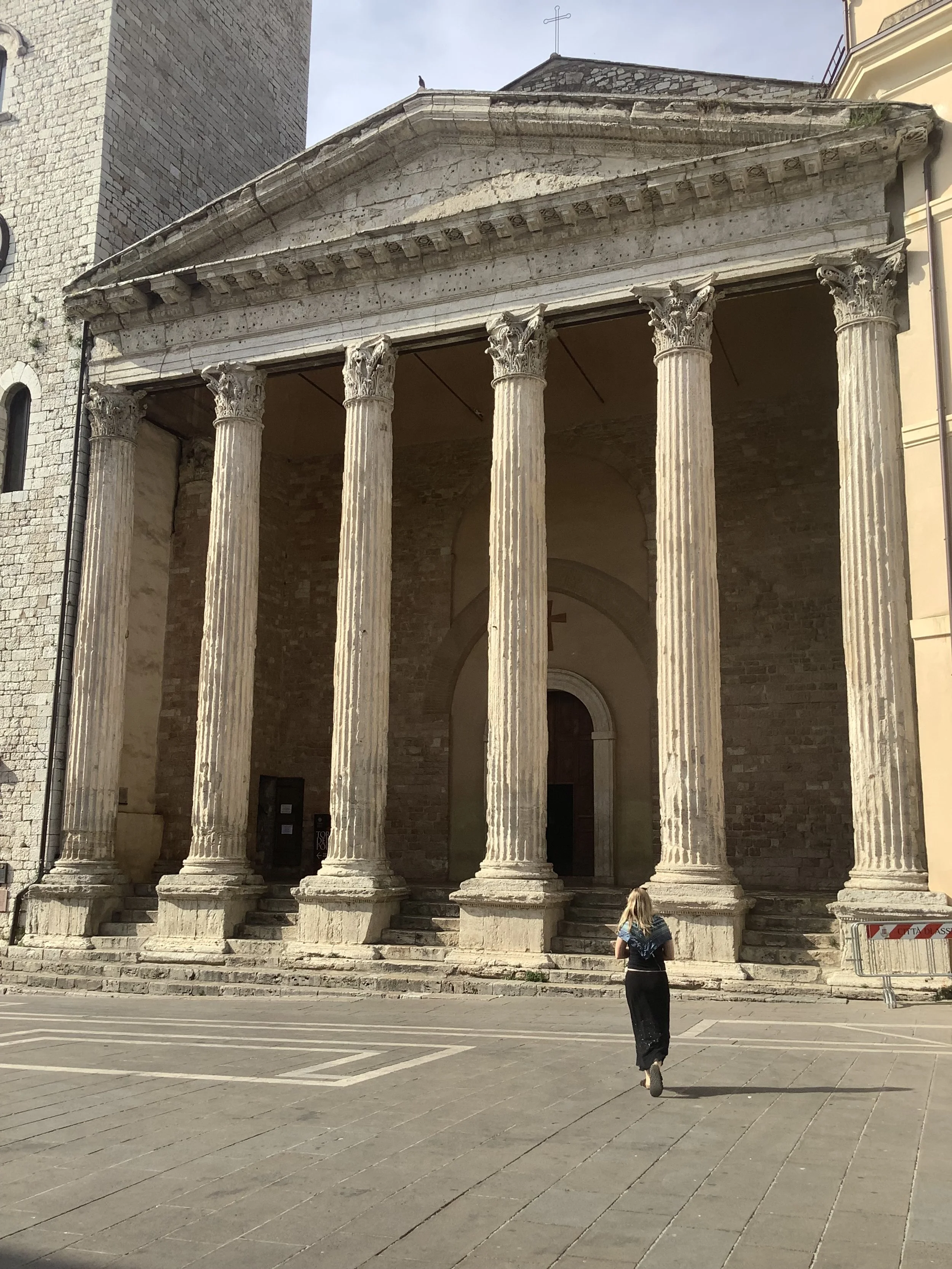XLV Assisi (Assisium)
What3words – informal.rugs.episode
Construction - 1st Century AD
Capacity -
Visited June 2025
Status – Hiding quietly in a corner of the Unesco World Heritage Site
Giovanni di Pietro di Bernardone, is to Perugia as John Winston Lennon is to Liverpool. Two global superstars whose fame underpins the tourist industry of their respective home towns, and to which their legacy attracts devotees in their thousands. Both have also had the nearest airport to their birthplace re-named after them. One was a saint, the other far from it. (Giovanni is better known as St. Francis of Assisi, John once got into some serious cack by speculating in an interview that The Beatles were more popular than Jesus Christ).
This part of Central Italy – now in Umbria, was overrun by the Romans after the battle of Sentium in 295 BC. They founded the fortified settlement of Assisium on the terraced slopes of Mt Subasio. Significant evidence of their presence remains, if somewhat overshadowed by pink stone basilicas, churches, colleges, monasteries, nuns, friars, shops full of medals, icons and other tat, coachloads of schoolchildren, pilgrims and tourists.
Major Roman features of interest include sections of city wall, the remains of a hippodrome under a car park to the east of the town, a gigantic portico to the temple of Minerva (now incorporated into the church of Santa Maria sopra Minerva) and of course, an amphitheatre.
The amphitheatre stood at the eastern extreme of the city with the Hippodrome to its south-west. Throughout the middle ages it was adapted, quarried and developed as a small and self-contained community. The medieval houses used and incorporated the materials and foundations of the arena and now survive replicating its shape in their walls, and the slope of the cavea in their roofs. They are still occupied and at least one is an Air B&B. Several houses have amphitheatre remnants, arches, walls and stonework within them and the central space is now surrounded by a wall forming a domestic garden. Inside an hotel on the south side, formerly part of the Santa Caterina monastery, are seven large pillars from the supporting structure of the cavea tiered seats. You can enter the Via Anfiteatro Romano and follow it around the circuit of the lower corridor outside the arena piste. A spur of the road leaves the south-east side and climbs to roof level on steps to overlook the central garden. The amphitheatre had community as well as residential functions in the post-Roman world. An arched enclosure on the south-east side contains a large stone tank which, until the late 20th century, was the centre of the local communal laundry in which sheets were rinsed, beaten on the stones and laid out to dry. There was also a functioning flour mill within the complex until the 20th century. A charming and excellent example in a quiet corner of this Unesco World Heritage site. Well worth visiting.
The Arched structure on the left housed a communal laundry.
Arches and walls within a private garden courtyard
16th Century Map with the Amphitheatre top right.
The laundry in use during the 20th century
Portico of the temple of Minerva.
